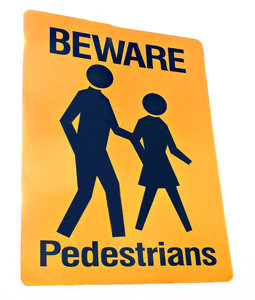A bus carrying Thayer Academy kids was unfortunately in an accident recently. According to the Braintree Patch, the bus slipped out of gear when it was being loaded with baggage at Camp Bourndale. It rolled down some stairs and right into the camp’s function hall. Luckily, no one was injured in the accident.

Our Plymouth car accident lawyers understand that school buses are used for much more than getting kids to and from school. They’re used for after school activities, for camps, for church events and for so much more. It’s important that everyone knows how to behave in and around a bus to help to make sure that everyone remains safe.
Capt. John Rogers of the Plymouth Police Department likes to remind kids walking to and from school bus stops to always use crosswalks and to stay on the sidewalk. You should avoid walking alone too, stay with parents, guardians or a group of friends.’
You should never accept a ride from someone you don’t know.
Most kids in the area take buses to and from school and use them for after school activities.
First Student offers young passengers some safety tips to help to make sure that each and every bus ride is a safe one. Parents are urged to talk with their children about the safety tips listed below to help ensure their safety on buses of all kinds.
Bus Safety Tips:
-Make sure you allow yourself plenty of time to get to the bus stop. If you have to rush, you may not follow safe traffic rules.
-Always walk on a sidewalk when there is one available.
-Always be alert. Don’t listen to MP3 players, play on phones or play hand-held video games. You want to know what’s going on around you.
-Don’t wear your hood up if you don’t have to. It makes it tougher for you to see.
-Wait for the bus away from the street. Stay at least 5 big steps away from the street.
-Avoid horseplay when waiting for the bus.
-Make sure that drivers can see you at all times.
-Wait for the bus to come to a complete stop before approaching.
-Find a seat and sit down immediately once you’re on the bus.
-Never toss anything out of the bus’ windows.
-Make sure you know your bus driver’s name and your bus number to make sure you’re always on the right bus.
-Stay quiet on the bus so that the driver can concentrate on the traffic and work to keep you safe!
-If you drop something near the bus, tell the driver first! Never go down to get it.
-Stay away from the bus wheels at all times – especially the back wheels where it’s hard for the driver to see you.
Continue reading
 Boston Personal Injury Attorney Blog
Boston Personal Injury Attorney Blog











